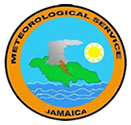A Doppler radar is a specialized radar that uses the Doppler effect to produce velocity data about objects at a distance. It does this by bouncing a microwave signal off a desired target and analyzing how the object’s motion has altered the frequency of the returned signal. This variation gives direct and highly accurate measurements of the radial component of a target’s velocity relative to the radar. Doppler radars are used in aviation, sounding satellites, meteorology, radar guns,[1] radiology and healthcare (fall detection[2] and risk assessment, nursing or clinic purpose[3]), and bistatic radar (surface-to-air missile).
Partly because of its common use by television meteorologists in on-air weather reporting, the specific term “Doppler Radar” has erroneously become popularly synonymous with the type of radar used in meteorology. Most modern weather radars use the pulse-doppler technique to examine the motion of precipitation, but it is only a part of the processing of their data. So, while these radars use a highly specialized form of doppler radar, the term is much broader in its meaning and its applications.


